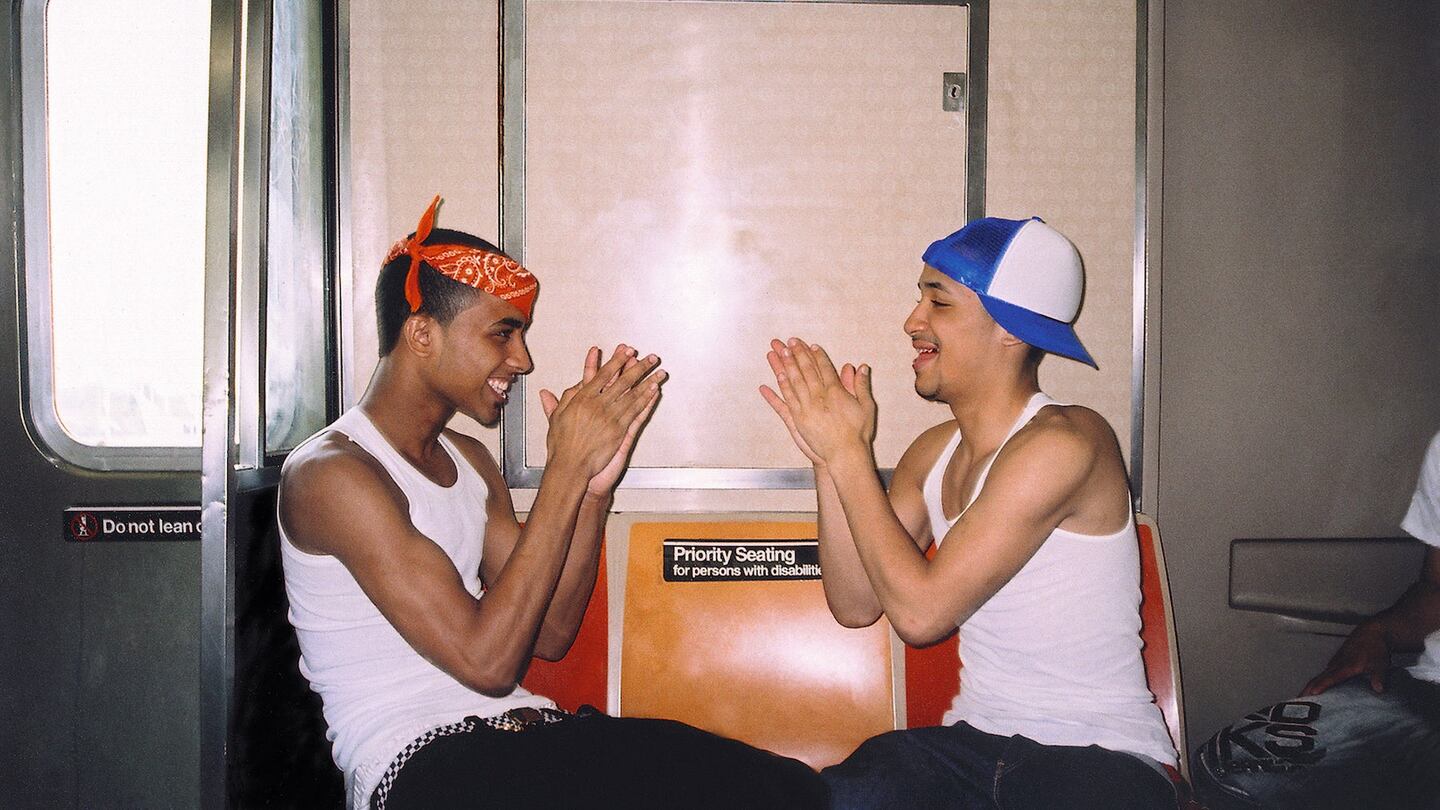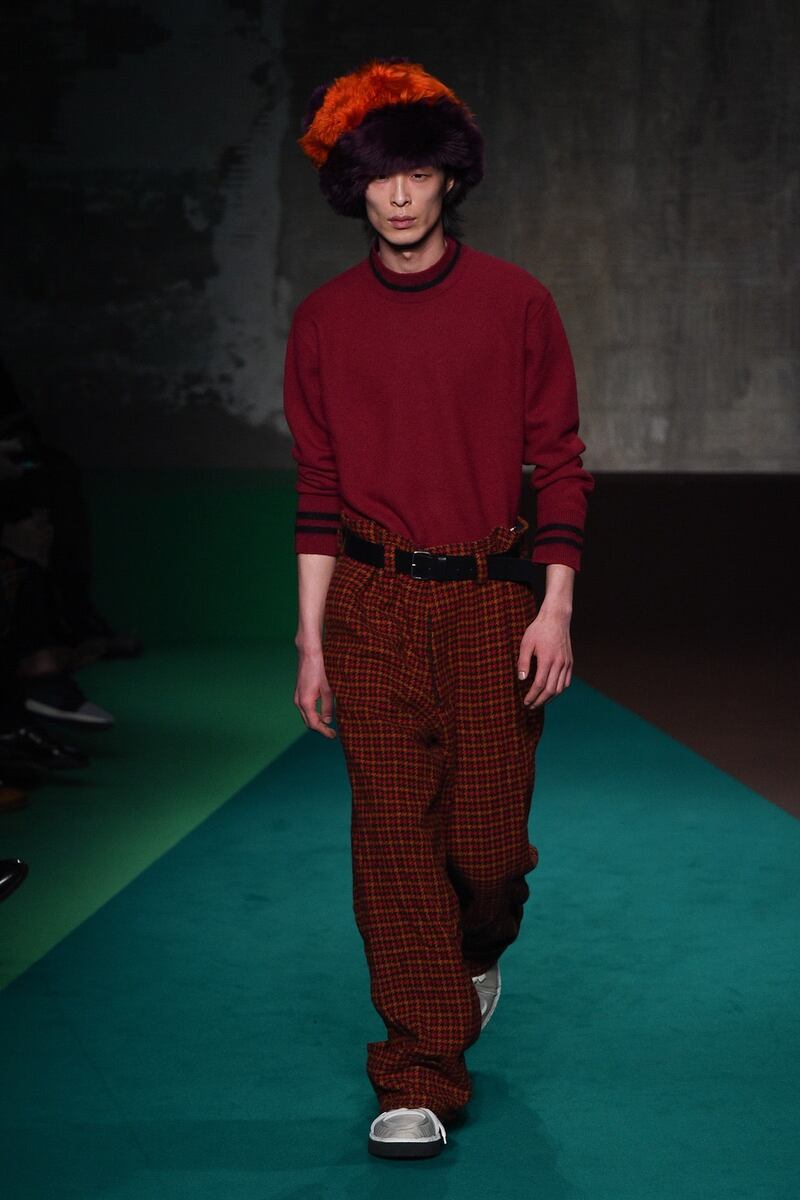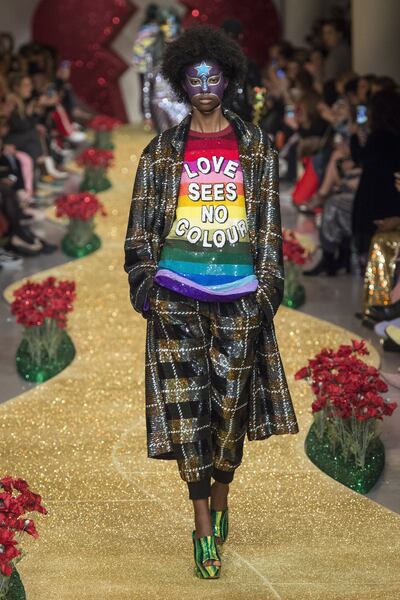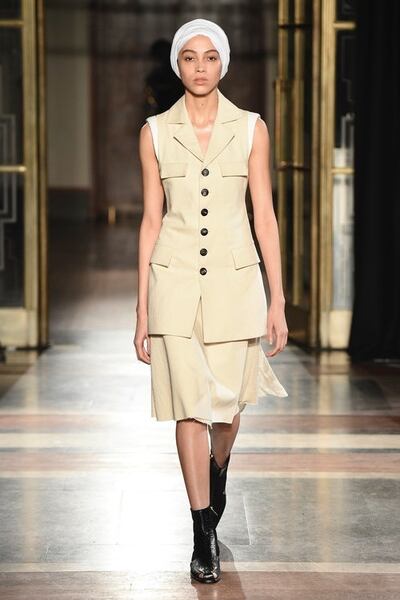
The Business of Fashion
Agenda-setting intelligence, analysis and advice for the global fashion community.

Agenda-setting intelligence, analysis and advice for the global fashion community.

LONDON, United Kingdom — As brands are becoming aware of the criticism of narrow representation in casting, a new generation of multi-tasking casting directors are attempting to change that. Campbell Addy, Madeleine Østlie, Kevin Amato, Mischa Notcutt and Troy Fearn, and Joyce NG are putting the issue at the forefront of their work for major brands and independent labels, with the view of making diversity de rigueur. Each one predominantly street-casts models, largely due to the lack of diversity on the books of major modelling agencies, and their work across both photography and shows reflect an inclusive vision of beauty that challenges Euro-centric beauty standards, which largely favours the pervasive willowy Caucasian look.
As a result, the independent modelling agencies founded by these casting directors, such as Campbell Addy’s ‘Nii Agency’, Kevin Amato’s ‘Mother’ agency, and Rachel Chandler and Walter Pearce’s ‘Midland’, are thriving thanks to a demand for diverse ‘new faces’ from large and small brands. They also chime with fashion’s taste for realism and ‘nodels’ – the non-models who are often also artists or creatives, modelling part-time.
Their work, across major brands and independent labels, is slowly making an impact. The most recent month of women's ready-to-wear shows in New York, London, Milan and Paris was the most racially diverse season in recent years according to The Fashion Spot, with 27.9 percent of the models walking in the 241 on-schedule shows being non-white. Shows including Ashish, Marni, Wales Bonner and Gareth Pugh, all cast by the directors profiled here, were pivotal in bolstering that statistic, which will hopefully increase as they become more sought-after.

Marni Autumn/Winter 2017 cast by Madeleine Østlie | Source: InDigital.tv
ADVERTISEMENT
Madeleine Østlie, AAMO
"Token diversity is what we need to move away from," says Madeleine Østlie, who grew up "in a terribly white little town with small-minded views and opinions, and one black girl at my school." The Norwegian-born casting director, who works predominantly with photographer Tim Walker, initially set up AAMO with model Adwoa Aboah, who has since moved on to other projects. The two began by casting their network of friends and faces they noticed on the street. "Street casting presents opportunities for those who are otherwise marginalised," she says. "The two of us hadn't come from a traditional casting route and Adwoa knew everyone in west [London] and I knew everyone in east. We could accumulate a lot of cool young kids and [diversity] was just something that came very naturally in terms of who we knew and our politics and interests."
Østlie got her break courtesy of Katie Grand, who hired her to cast for Love magazine, which quickly led to projects with Edward Enninful, the Italian and American editions of Vogue and clients including Marc Jacobs, Jo Malone, and Estee Lauder. She credits Marni, a client since the appointment of Francesco Risso, for being one of the few Italian brands to make diversity an active part of their agenda at the recent Milan Fashion Week. "I don't think you need to be ticking boxes, but then again it is a benchmark to being more inclusive and if positive discrimination is what it takes to make things more diverse, then maybe that's a good thing." However, she is quick to add that race is not the only barrier to success as a model — age, size, and even established experience can hinder a model from being booked. "There is a conveyor belt and desire for new," she adds, as an explanation of the way brands are quick to move on from casting certain minorities. "James Scully was right when he said that in the Nineties, it wasn't about black or white — it was about harnessing and empowering the careers of women. Now, I hear people say, 'Oh, but she's done two seasons' or 'Oh, but she's 18.'"

Alexander McQueen Autumn / Winter 2017 | Source: Courtesy
Campbell Addy, Nii Agency
Campbell Addy is the photographer-cum-model-agent behind ‘Nii Agency’, which is devoted to diverse representation of its (predominantly male) models. The Central Saint Martins graduate set it up last year after finding it challenging to find new faces that were not the conventional Euro-centric norm. “When I went to a model agency and asked for a dark-skinned girl with natural hair, I would be given Brazilian girls or Spanish girls,” he says. “They would say that they don’t have any black girls of that description or that they’ve only got one, which is troubling. You can go and see brown-haired white girls with the same hair length and there are 20 of them in the same agency. Nobody says we don’t need a long-haired white girl because we’ve got one already.”
Addy began street-casting as a way to cast for his own photography, before realising there was potential to represent the faces in his pictures on a deeper level, helping to launch their careers. Now, he is signing deals with major brands, such as Alexander McQueen and MCM, which both booked King Owusu to front campaigns and look books. "Diversity needs to be normalised and not be a trend," he adds. "The way to do that is to make sure that it's not just diverse on the outside, but that the photographers, producers — if you're going to do a project on Senegal or India, then get the people who have a direct link to it. That's when it becomes authentic. It's great to be diverse visually, but we need more of it behind the scenes."
Earlier in his career, Addy was accidentally looped into a conversation with a commissioning editor who questioned his ability to shoot Caucasian models as well as black models. "I have to do a lot of great work and then adjust it to fit into a publication," he says, before adding that most casting directors and designers are not racist but do "acts of racism". After James Scully's naming and shaming of instances of abuse and discrimination – something that Addy says came as no surprise to him – his aim was to become an agency that went beyond the 'diversity' tagline. "It shouldn't be just attacking a brand, but creating a dialogue instead of a lynch mob," he explains. "If you're not going to be diverse, [then] have integrity and stand up and say why you're doing that and respond when people call you out. Then you'll realise how ridiculous it is."
ADVERTISEMENT

Ashish Autumn/Winter 2017 Lookbook | Source: Coutesy
Mischa Notcutt and Troy Fearn, TM Casting
"We try to push diversity at all costs," says Mischa Notcutt, who began by assisting casting directors, before becoming a freelance stylist and launching her partnership with Troy Fearn a year and a half ago. Working with a combination of independent labels, such as Faustine Steinmetz and Gareth Pugh, as well major brands including Valentino and Adidas, TM Casting has carved an impressive career thanks to their sense of the zeitgeist. Notcutt and Fearn's portfolio is as diverse as it gets — at the Ashish show at London Fashion Week in February, for example, the sparkling rainbow stripes were worn by a line-up that was just as colourful.
"We don't feel comfortable when it's not diverse. Especially when you've got 20 or 30 models in the show, there's simply no excuse — it's 2017," says Notcutt. The duo accepts even challenging briefs from brands, and will often bring a different perspective to the table. "Sometimes a designer will say that they come from a Russian background, and this is the theme and this is what they want to do with the casting, and whenever we get a brief for something like that, we say 'Well, have you thought about this?' 'Have you thought about using Uzbekistani people or Mongolians?'" she adds. "We try to make it as broad as possible." However, although they can strongly suggest, they say that the final decision rests with the client. "You can push and push and push but if a designer doesn't like them, that's it. There's no convincing. If they don't want to do it, they won't do it. When Jonathan Anderson wanted to use lots of Indian boys, he went out and found them — it all comes from the designer, but we always try to show beauty in all forms and races."
Kevin Amato, Mothermgmt
“I call it the ‘Sesame Street effect’,” says Kevin Amato, the New York-based photographer and casting director who has pioneered social media and street casting for brands including Hood by Air, Eckhaus Latta, and VFiles. “It should never be a checklist — ‘Oh, here’s one Spanish, one black, one transgender’ — but a story and a narrative with everyone as characters. Some people call it a freak show.”
Amato began working with Hood by Air's Shayne Oliver in 2006, shaping the label's powerful image as an avant-garde New York fashion label, often looking to Instagram and the outer boroughs of New York for unconventional runway models. "Street-casting is about lifestyle, and Hood by Air is a lifestyle brand — it's more than about the clothes; it's a whole world that people want to be a part of," he adds. " Shayne would always say, 'No fillers'. It can't be gimmicky. Now, with social media, we know what's real and what's fake. You can tell when something's forced – even if it's a Kardashian."
I call it the 'Sesame Street effect' ... It should never be a checklist — 'Oh, here's one Spanish, one black, one transgender.'
In 2015, Amato launched his own agency, Mothermgmt, to directly cater to the rising demand for street cast models, especially as larger agencies began signing his discoveries. “It became a big trend and a lot of people jumped on the bandwagon,” he explains. “I didn’t want to compete with other brands so I opened my own agency, and all of my models have so many other talents. The industry is changing and the value is now in the impact of the influencer.”
ADVERTISEMENT
Amato believes that casting is ever more important within a social and political context, and can be crucial in addressing fear. “When Shayne and I went to Pitti Uomo in Florence, I think it was the first time they had ever seen a transgender model. I mean, it will be a while before Versace is street-casting, but it’s slowly becoming more diverse in every city.”

Wales Bonner Autumn/Winter 2017 | Source: InDigital.tv
Joyce NG
When Joyce NG began casting Grace Wales Bonner's menswear presentations, she looked to the street to find the mix of ethnicities that were lacking on the books of agencies. "Back then, there were less choices than there are now," she explains of the predominantly south Asian and black models she cast. "I'd go to agencies, and there weren't any new faces — it would just be the top token models and there was no chance they'd fly out for the presentation." As a result, the mainly street-cast line-up became a focal point of the designer's powerful vision, and the two Central Saint Martins graduates continue to collaborate – the most recent show, which was 29 looks, was a mix of street-cast and agency models.
“I don’t enjoy the lack of human contact that comes with generic agency casting,” adds NG. “Often, really young models come with a heavier energy as they treat it as work. I enjoy the personal interaction that comes with meeting someone in the street. There’s a different kind of stress when you shoot street-casted models because it’s a new thing for them and they’re usually quite nervous but also engaged with the experience.”
NG grew up in Hong Kong, and her work as a photographer has appeared in L’Officiel, Man About Town AnOther, and Dazed & Confused — but she says her native market has been reluctant to embrace her because of the diversity in her casting. “Don’t even try and get a black model on any Asian campaign,” she emphasises. “If there are a couple of black girls in a big campaign, they won’t appear on the Asian billboards — they will actually be cut out. It’s better in Korea because they catch on to trends and it’s a young market, but it’s still hard.”
However, NG is quick to point out diversity’s double-edged sword: her reputation for casting ethnic faces can work to her disadvantage, as ‘diversity’ becomes a buzzword for brands. “When I post a photo on Instagram in which the model is not black or brown, I lose followers,” she says. “What happened to the Asian model? Italian Vogue did a whole Chinese issue and now it’s died down. Clients have hinted me to that they want brown and black models, but it doesn’t work like that — it’s about being inspired. It shouldn’t be gimmicky.”
Related Articles:
[ Models Face Bullying, Cruelty and Racial Discrimination at CastingsOpens in new window ]
[ What Really Happened at the Balenciaga Casting?Opens in new window ]
[ June Sarpong and DeRay McKesson on Race and Inequality in FashionOpens in new window ]
[ Joan Smalls and Hari Nef on Discrimination in FashionOpens in new window ]
From analysis of the global fashion and beauty industries to career and personal advice, BoF’s founder and CEO, Imran Amed, will be answering your questions on Sunday, February 18, 2024 during London Fashion Week.
The State of Fashion 2024 breaks down the 10 themes that will define the industry in the year ahead.
Imran Amed reviews the most important fashion stories of the year and shares his predictions on what this means for the industry in 2024.
After three days of inspiring talks, guests closed out BoF’s gathering for big thinkers with a black tie gala followed by an intimate performance from Rita Ora — guest starring Billy Porter.